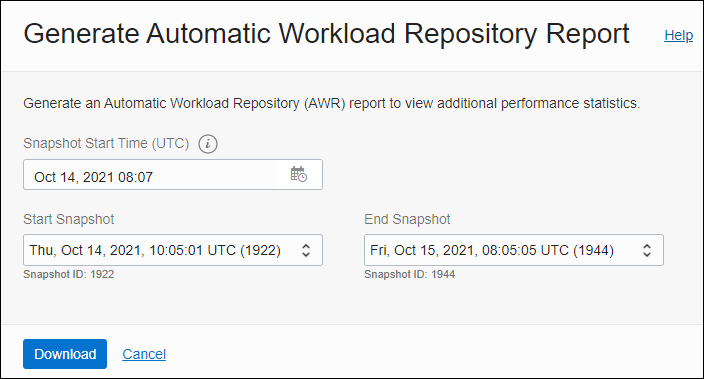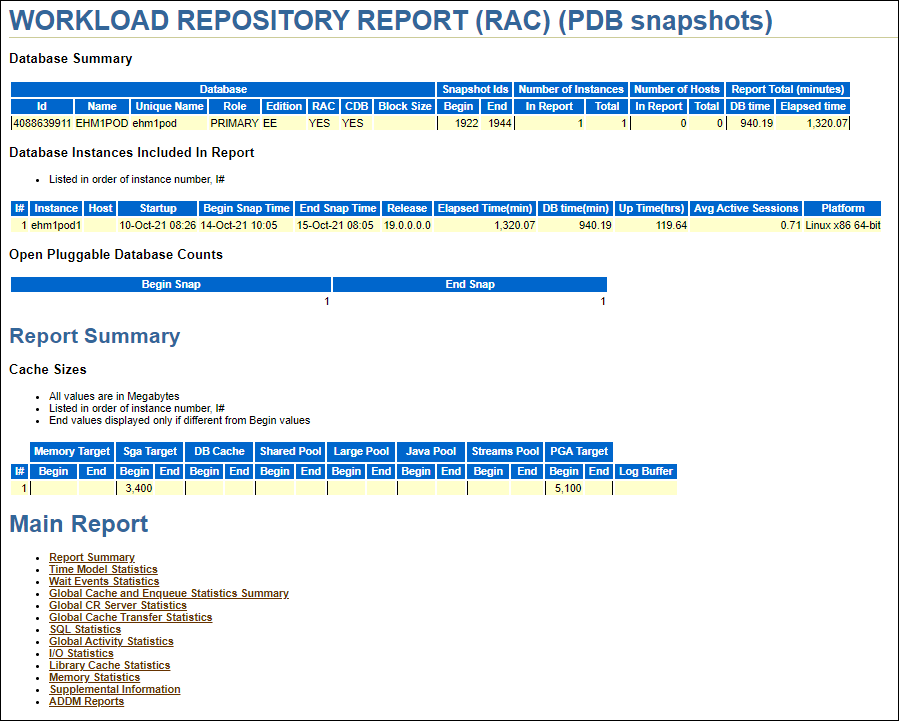Generate an AWR Hub Report
An AWR report contains performance statistics on database activity between two points in time – two snapshots. This can be used for problem detection and self-tuning purposes. For example, you can compare database statistics captured during a period of poor performance and compare it with normal baseline performance to identify and diagnose problems. Because AWR Hub stores AWR snapshots for multiple databases, you can easily compare performance statistics across your database fleet.
Typical Use Cases
- Track and analyze SQL plan changes for workloads within a single database
- Track and analyze SQL plan changes for workloads across multiple databases
- Understand past and present workload (SQL) performance over a period of two years or above.
- Build custom dashboards to plot SQL performance statistics, database waits, CPU usage history, connections established, etc.
Create an AWR Report
- Click AWR Hub from the left navigation menu to access the AWR Hub dashboard.
- From the Databases providing AWR snapshots table, locate the database for which you want to generate an AWR report.
- Click More (vertical ellipses) in the last column to display the pop-up menu and select Generate AWR Report. The Generate Automatic Workload Repository Report dialog displays.

Selecting a different Snapshot Start Time changes the list of available snapshots for the Start Snapshot and End Snapshots drop-down menus.
- Click Download. The report is generated in HTML.
